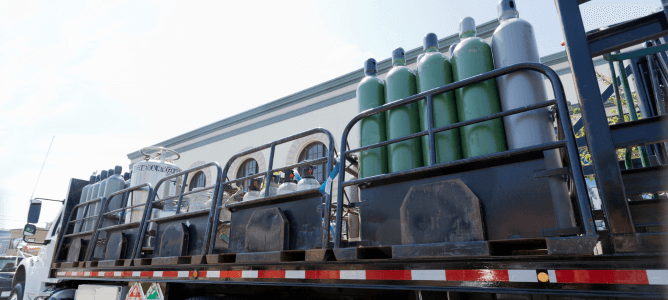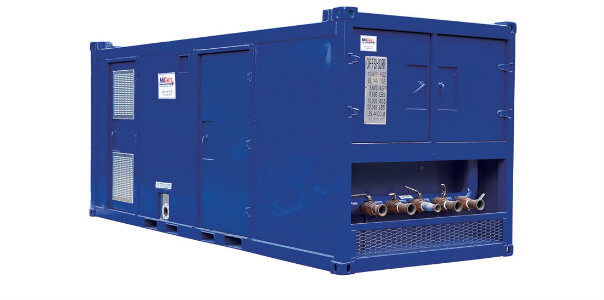
Nitrogen Membrane Units: Unlocking Efficiency & Sustainability in Gas Separation
Nitrogen membrane units are valuable tools in gas separation processes, offering increased efficiency and sustainability. In this article, we will provide you with an overview of nitrogen membrane units, including their key components and operation. We will also delve into the importance of efficiency and sustainability in gas separation processes, comparing PSA vs. membrane separation methods.
Nitrogen Membrane Units: An Overview
Nitrogen membrane units are advanced systems used in gas separation processes. These units operate based on the principle of selective permeation, where nitrogen molecules pass through a semipermeable membrane while other gasses are rejected. By utilizing this technology, nitrogen membrane units offer several benefits, including increased efficiency and sustainability.
One of the significant advantages of using nitrogen membrane units is their ability to provide high-purity nitrogen gas. These units can achieve nitrogen purity levels as high as 99.5%, making them ideal for various industries such as oil and gas, chemical, and food and beverage. With nitrogen membrane units, companies can eliminate the need for traditional nitrogen cylinders or costly nitrogen generators, reducing both logistical challenges and operational expenses.
Real-world case studies highlight the successful use of nitrogen membrane units in improving operational efficiency and reducing environmental impact. These units have been instrumental in minimizing downtime, corrosion, and the need for frequent maintenance associated with traditional gas separation methods. By utilizing membrane technology, companies can achieve efficient gas separation without relying on energy-intensive processes like pressure swing adsorption (PSA) or cryogenic distillation.
Key Components and Operation of Nitrogen Membrane Units
Nitrogen membrane units utilize hollow fiber membranes to selectively separate nitrogen from other gasses. Key components of these units include the compressor, membrane module, and nitrogen outlet. Through the process of selective permeation, nitrogen molecules pass through the membrane while other gasses are retained.
Unlike energy-intensive cryogenic distillation processes, these units eliminate the need for such methods, making them more cost-effective and environmentally friendly. Additionally, their compact design and modular nature make them suitable for various applications, including gas purification and nitrogen generation.
By utilizing nitrogen membrane units, industries can achieve high-purity nitrogen without the logistics and downtime associated with traditional nitrogen cylinders. Moreover, the membrane technology ensures the removal of impurities such as carbon dioxide and water vapor, providing a clean nitrogen supply.
Importance of Efficiency and Sustainability in Gas Separation Processes
Efficiency and sustainability are crucial factors to consider in gas separation processes. Nitrogen membrane units offer numerous benefits in this regard. These units improve efficiency by selectively permeating nitrogen molecules through their membranes, leaving behind other gasses. By utilizing membrane technology instead of traditional methods like adsorption or pressure swing adsorption (PSA), nitrogen membrane units reduce energy consumption and eliminate the need for air compressors or molecular sieves. They provide a cost-effective solution for generating high-purity nitrogen.
Moreover, nitrogen membrane units have environmental advantages as well. By relying on membrane separation instead of combustion or cryogenic distillation, these units significantly reduce greenhouse gas emissions. They also eliminate the logistical challenges and safety risks associated with handling nitrogen cylinders or liquid nitrogen.
As sustainable practices become increasingly important, nitrogen membrane units hold immense future potential in advancing gas separation technologies.
Comparing PSA vs. Membrane Separation Methods
When it comes to separating nitrogen from air, two popular methods that are often compared are PSA (Pressure Swing Adsorption) and membrane separation. PSA utilizes adsorbent material to selectively absorb certain gasses, while membrane separation relies on a permeable membrane to separate gasses based on their molecular size. While both methods have their advantages and disadvantages, they are suited for different applications.

PSA is known for its efficiency in high-purity separations. It is commonly used when a high level of purity is required, such as in the production of medical-grade nitrogen or in the electronics industry. On the other hand, membrane separation is better suited for lower purity applications, where the separation requirements are not as stringent. It is widely used in industries such as food and beverage, where a lower level of purity is acceptable.
In terms of operating costs and maintenance, PSA systems can be more expensive compared to membrane systems. PSA systems require regular regeneration cycles and may involve the use of additional equipment, such as air compressors and CMS (Carbon Molecular Sieve) beds. In contrast, membrane systems typically offer lower operating costs and require less maintenance. They operate using a simple filtration process without the need for complex regeneration cycles.
The choice between PSA and membrane separation methods depends on various factors such as desired purity levels, gas composition, and budget constraints. For applications requiring high-purity nitrogen or other gasses, where cost is not a major concern, PSA may be the preferred choice. On the other hand, if cost-effectiveness and ease of operation are important, membrane separation may be the better option.
In conclusion, PSA and membrane separation are both effective methods for gas separation, each with its own strengths and considerations. Understanding the specific needs of the application and considering factors such as purity requirements and budget constraints will help in making an informed decision.
Contact NiGen for Efficient and Sustainable Membrane Nitrogen Generators
NiGen offers advanced nitrogen membrane generators that are highly efficient and reliable. These membrane units utilize membrane technology, which provides a cost-effective and sustainable solution for gas separation.
Please contact us today to learn more about our services and membrane nitrogen generators.
